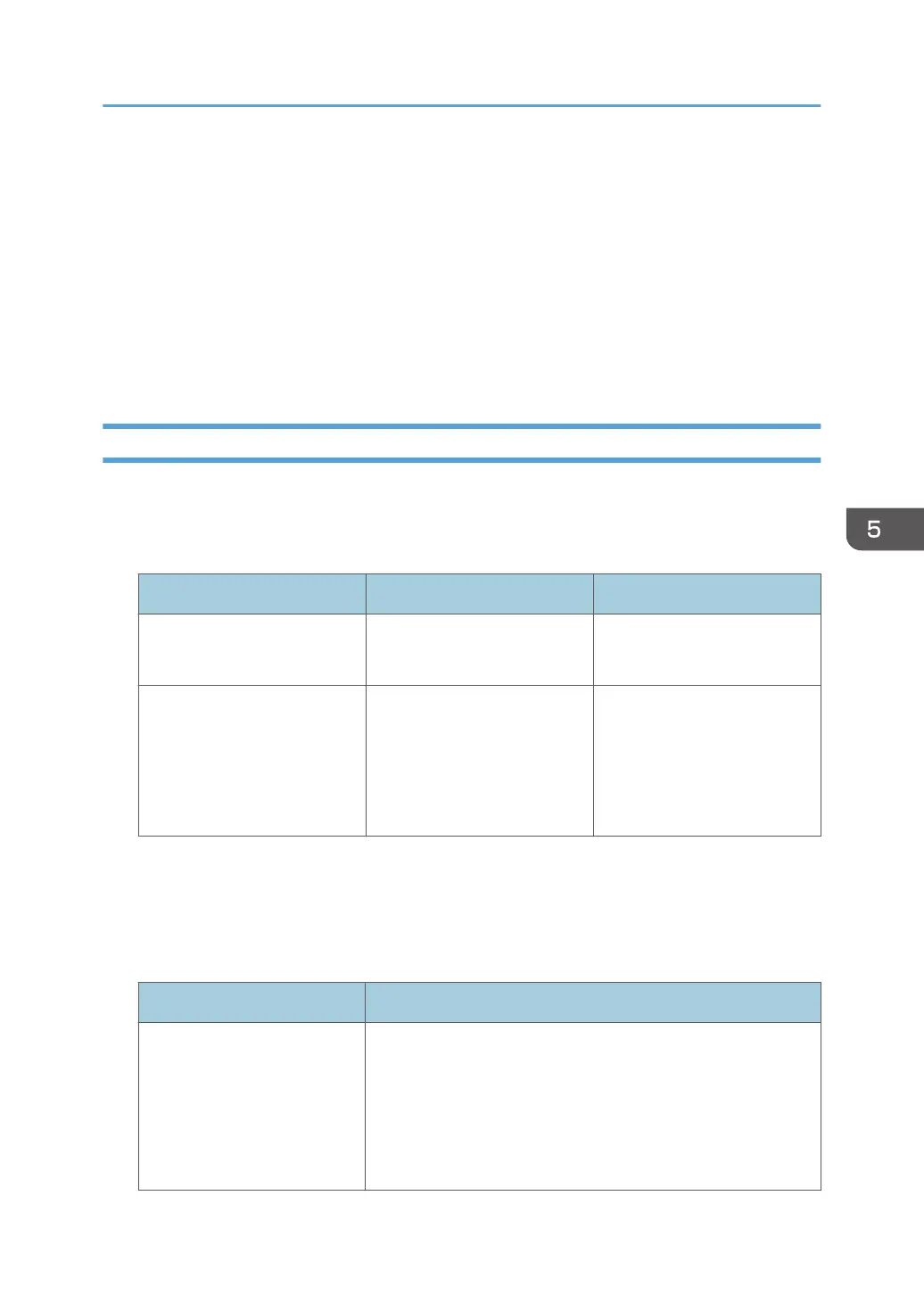Settings 1-4 and default setting
Using the auto exchange method, you can configure four separate sets of SA details (such as
different shared keys and IPsec algorithms). In the default settings of these sets, you can include
settings that the fields of sets 1 to 4 cannot contain.
When IPsec is enabled, set 1 has the highest priority and 4 has the lowest. You can use this priority
system to target IP addresses more securely. For example, set the broadest IP range at the lowest
priority (4), and then set specific IP addresses at a higher priority level (3 and higher). This way,
when IPsec transmission is enabled for a specific IP address, the higher level settings will be
applied.
IPsec Settings
IPsec settings for this printer can be made on Web Image Monitor. The following table explains
individual setting items.
IPsec settings items
Setting Description Setting value
IPsec
Specify whether to enable or
disable IPsec.
• Active
•
Inactive
Exclude HTTPS
Communication
Specify whether to enable
IPsec for HTTPS transmission.
• Active
•
Inactive
Specify "Active" if you do not
want to use IPsec for HTTPS
transmission.
The IPsec setting can also be made from the control panel.
Encryption key auto exchange security level
When you select a security level, certain security settings are automatically configured. The
following table explains security level features.
Security level Security level features
Authentication Only
Select this level if you want to authenticate the transmission
partner and prevent unauthorized data tampering, but not
perform data packet encryption.
Since the data is sent in cleartext, data packets are vulnerable
to eavesdropping attacks. Do not select this if you are
exchanging sensitive information.
Configuring IPsec
129
